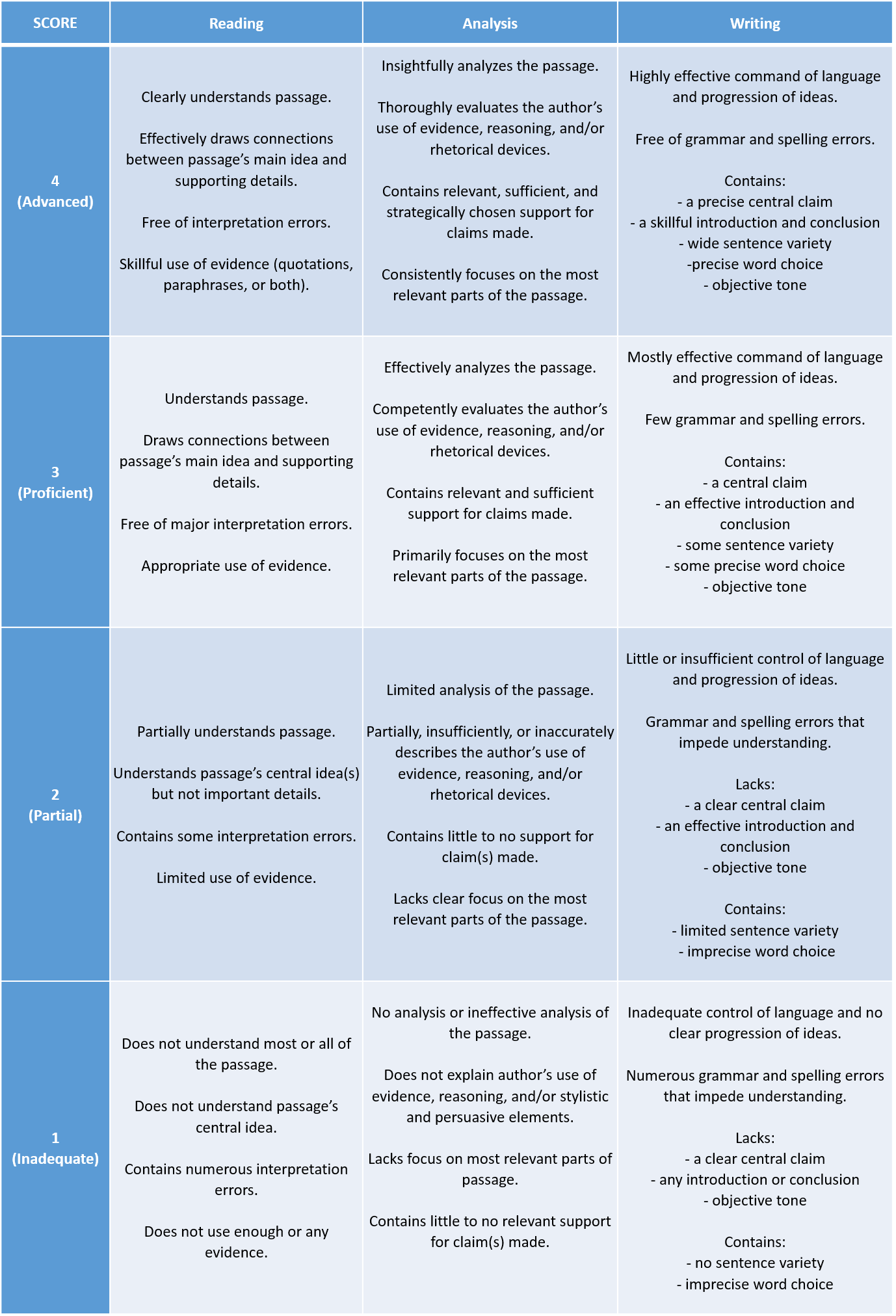We made it to the last Tests Uncovered post! It’s hard to believe our first post of the series was published back in May of 2015. In the months since then, we have covered just about everything students can expect to see on the redesigned SAT exam (making its debut in just over one week!) and the small changes made to the ACT back in the fall.
For a handy reference to every post whenever and wherever, make sure to download parts one and two of our free Tests Uncovered eBook. Click here to download. Keep an eye out for the next installment, which will be released soon!
This week we are taking a look at scoring on the Redesigned SAT Essay Section.
How is the new essay scored?
Students receive three separate essay scores: Reading, Analysis, and Writing. Each score gauges a distinct attribute of the essay. Two graders score a student’s essay, and each grader assigns a score from 1–4 point for each of these attributes. The scores are then combined to form three separate scores from 2–8. For example, a students might receive a score of 5, 7, 6, meaning a 5 out of 8 for Reading, a 7 out of 8 for Analysis, and a 6 out of 8 for Writing.
What does the rubric look like?
The complete new SAT essay rubric looks a little intimidating at first glance. However, it repeats the same themes again and again. We’ve included a few key elements here, but you can reference an abridged version of the College Board’s rubric at the end of this blog.
Reading: This score measures how well a student comprehends the passage.
- Does he or she correctly identify the passage’s main idea?
- Does he or she show how passage details reinforce that main idea?
- Does he or she make any factual errors?
- Does he or she reference the right parts of the passage?
Analysis: This score measures how well a student analyzes a passage.
- Does he or she relate each of his arguments back to a central claim?
- Does he or she explain how the author develops his argument?
- Does he or she give examples of the author’s argumentative techniques?
- Does he or she stay focused on the most important parts of the passage?
Writing: This score measures how well a student writes an analytical essay.
- Does it have a thesis?
- Does it have an introduction, body, and conclusion?
- Is there enough sentence variety to keep the reader engaged?
- Did he or she choose the right words to express him or herself?
- Are there any spelling or grammar errors that make it difficult to understand his or her message?
How does this compare to the old SAT?
Three Scores
The old SAT rubric assigned just one grade based on an overall impression how well written an essay was. Now, students receive three equally important scores. These scores measure how well a student reads, interprets, and analyzes a passage as well as how effectively he crafts his own essay. So, a student who analyzes passages well but struggles with spelling and grammar will still have an opportunity to showcase his strengths on test day.
Smaller Scale
We should also note that the new SAT essay is graded on a smaller scale. Whereas the old SAT essay graders evaluated the essay on a scale of 1–6, new graders must select scores from 1–4. Old graders were expected to assign scores within one point of one another, so they were very reluctant to assign extremely high or low scores. With the change in scale, however, graders will likely be more willing to assign “very high” scores (i.e. 4) or “very low” scores (i.e. 1) because these scores are not as far from the middle as they used to be.
Optional
The biggest scoring difference between the old and new SAT essay is that the new SAT essay is no longer required. Whereas the old SAT essay determined one-third of a student’s writing score, the new SAT essay is an optional section scored on its own.
What does this mean for students?
If you prepped for the old SAT essay, do not despair. A lot of what you learned still applies. For example, high-scoring essays must be as long as possible, organized by paragraph, and primarily made up of evidence and analysis. However, the new essay has added several elements you’ll want to be familiar with before test day. Take some time to review the rubric and then consider sitting for a practice exam. If possible, try to take your practice exam with a tutor or company that offers complimentary SAT scoring.
Will the essay be on the PSAT?
No. The PSAT does not include the essay.
The following rubric has been adapted from the College Board’s Official Guide to the SAT.


